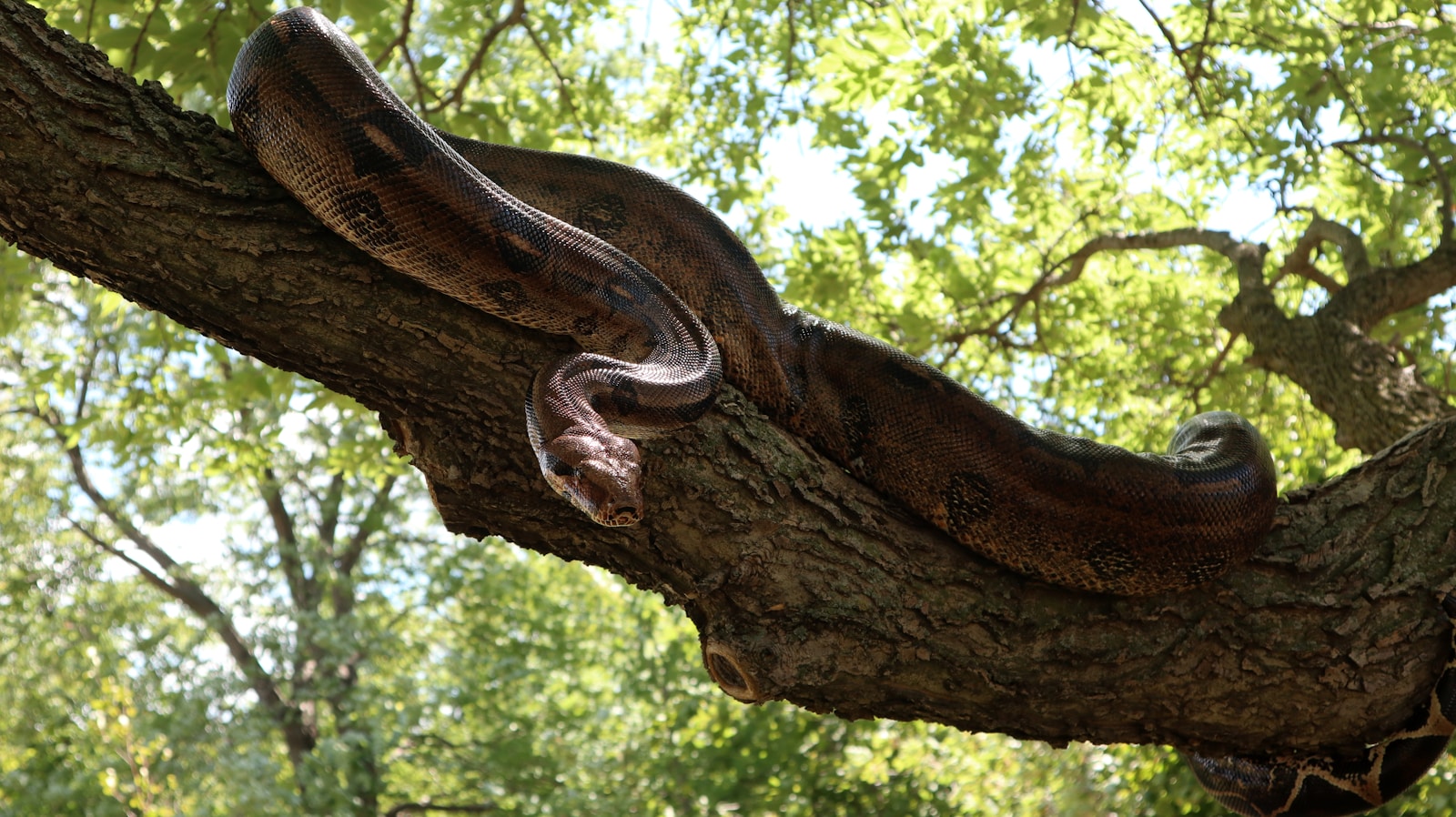In the hidden dramas of the natural world, some of the most fascinating interactions involve unlikely predators with remarkable adaptive strategies. Among these, certain snake species have evolved an extraordinary ability to infiltrate bird nests undetected, creating a perfect ambush scenario that often ends tragically for the unsuspecting avian residents. These serpents combine stealth, patience, and specialized behaviors to overcome the typically vigilant defenses of nesting birds. Their success lies not just in physical attributes, but in sophisticated behavioral adaptations that have evolved over millions of years. This delicate predator-prey relationship represents one of nature’s most compelling examples of evolutionary arms races, where the survival of one species depends on outwitting another.
The Masters of Deception: Introducing Nest-Raiding Snakes
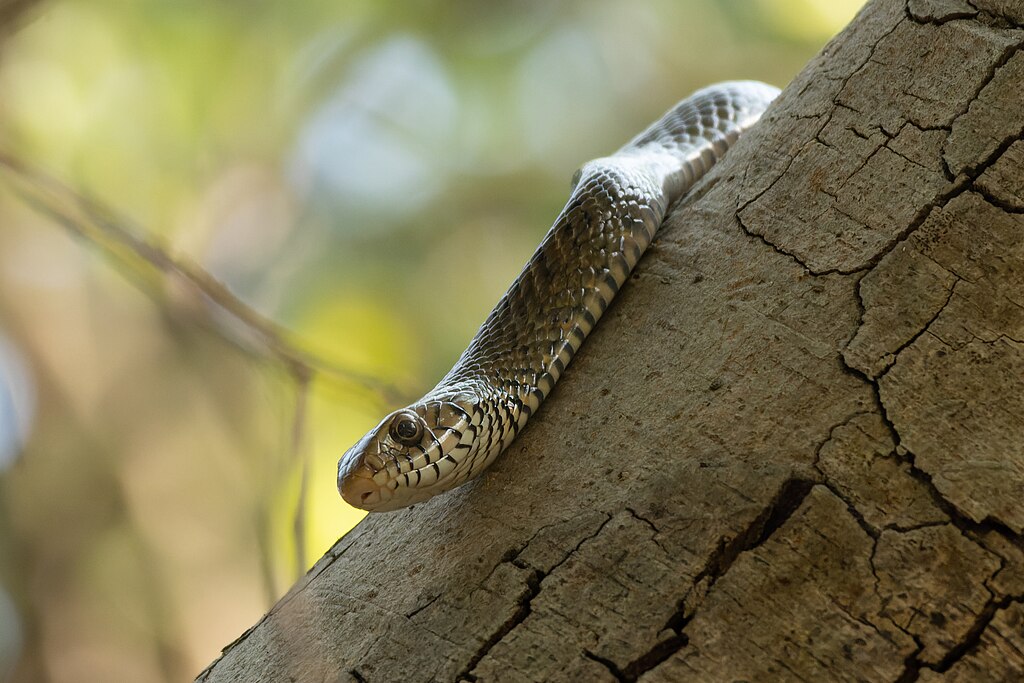
Several snake species worldwide have specialized in raiding bird nests, with rat snakes (genus Pantherophis) in North America, brown tree snakes in the Pacific, and certain forest cobras in Africa being among the most notorious nest predators. These serpents have evolved specific adaptations that make them particularly effective at locating and accessing nests without triggering defensive responses from parent birds. Their slender bodies allow them to navigate the complex architecture of tree branches and nest structures with minimal movement and disturbance. Furthermore, some species have developed specialized scales that reduce friction and noise when moving through foliage, making their approach nearly silent. This evolutionary specialization demonstrates how predation pressure can drive the development of highly specific hunting techniques in predator species.
The Chemical Disguise: How Snakes Mask Their Scent
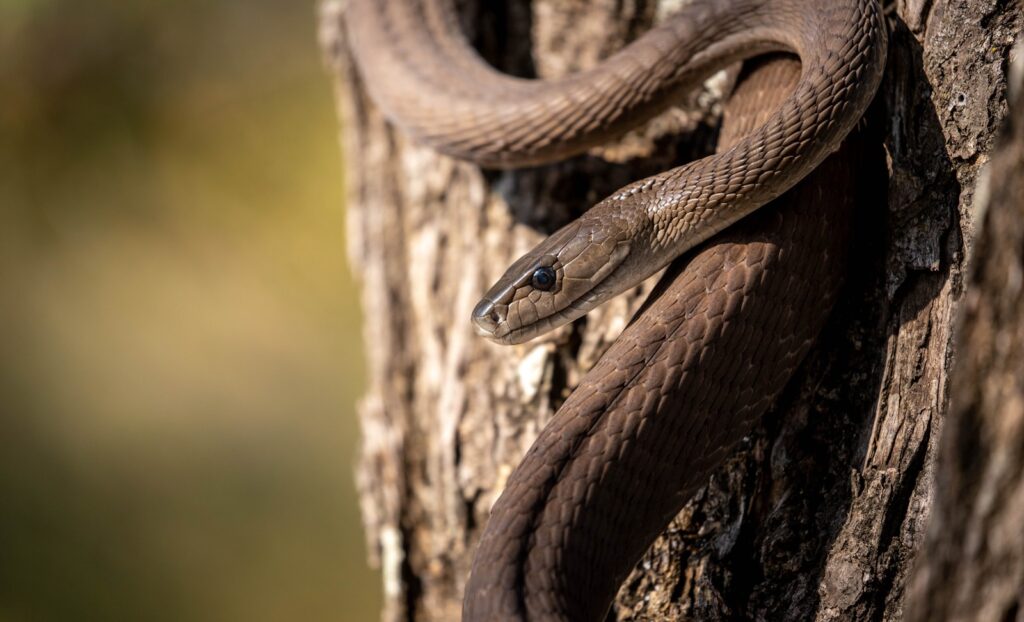
One of the most remarkable adaptations of nest-raiding snakes is their ability to chemically camouflage themselves from the keen olfactory senses of birds. Research suggests that some species may be capable of temporarily suppressing the production of certain pheromones and scent markers that would otherwise alert birds to their presence. In other cases, snakes may deliberately slide against specific plants or materials that mask their natural odor, effectively creating a form of chemical camouflage. Some species even appear to adopt a different metabolic state when hunting, reducing the emission of volatile compounds that might betray their presence. This olfactory deception is particularly important since many bird species rely heavily on their sense of smell to detect potential predators near their nesting sites.
The Perfect Timing: Strategic Patience in Hunting
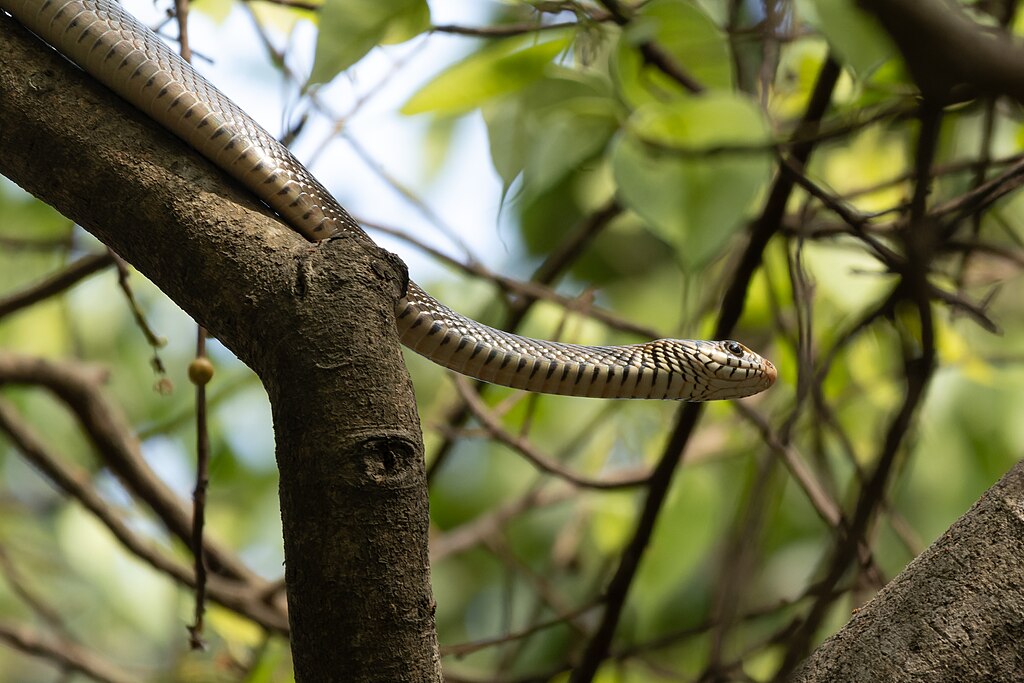
Nest-raiding snakes display remarkable patience in their hunting strategies, often observing bird behavior for extended periods before making their approach. Many species have been documented waiting for optimal moments when parent birds are away foraging, minimizing the risk of confrontation and defensive attacks. This temporal awareness appears to be particularly advanced in species like the North American rat snake, which may track parental movement patterns for days before attempting to access a nest. The timing of raids often coincides with periods when eggs or vulnerable hatchlings are present, maximizing the caloric reward for the snake’s effort. Some observations suggest that these predators can even adjust their hunting schedules to align with the particular nesting cycles of target bird species in their habitat.
Visual Camouflage: Blending Into the Canopy
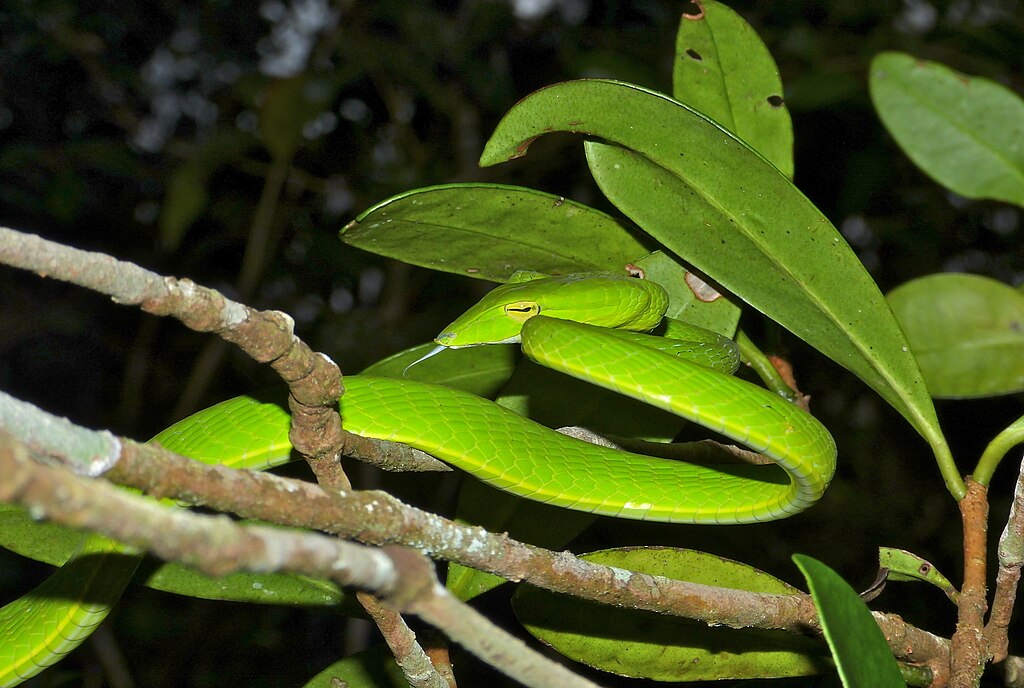
The physical appearance of nest-raiding snakes frequently exhibits excellent adaptive camouflage that helps them blend seamlessly into arboreal environments. Species like the green tree python and emerald tree boa display coloration that perfectly matches the foliage where birds typically nest, making them nearly invisible when stationary. Pattern disruption is another common feature, with many species having blotches or bands that break up their outline against dappled light filtering through leaves. This visual deception is particularly effective against birds, whose vision is often their primary defensive sense. Some snake species can even adjust their positioning to mimic vines or branches, holding perfectly still for hours while gradually approaching a nest location, exploiting the tendency of birds to eventually habituate to non-moving objects in their environment.
Behavioral Mimicry: Acting Like Part of the Nest
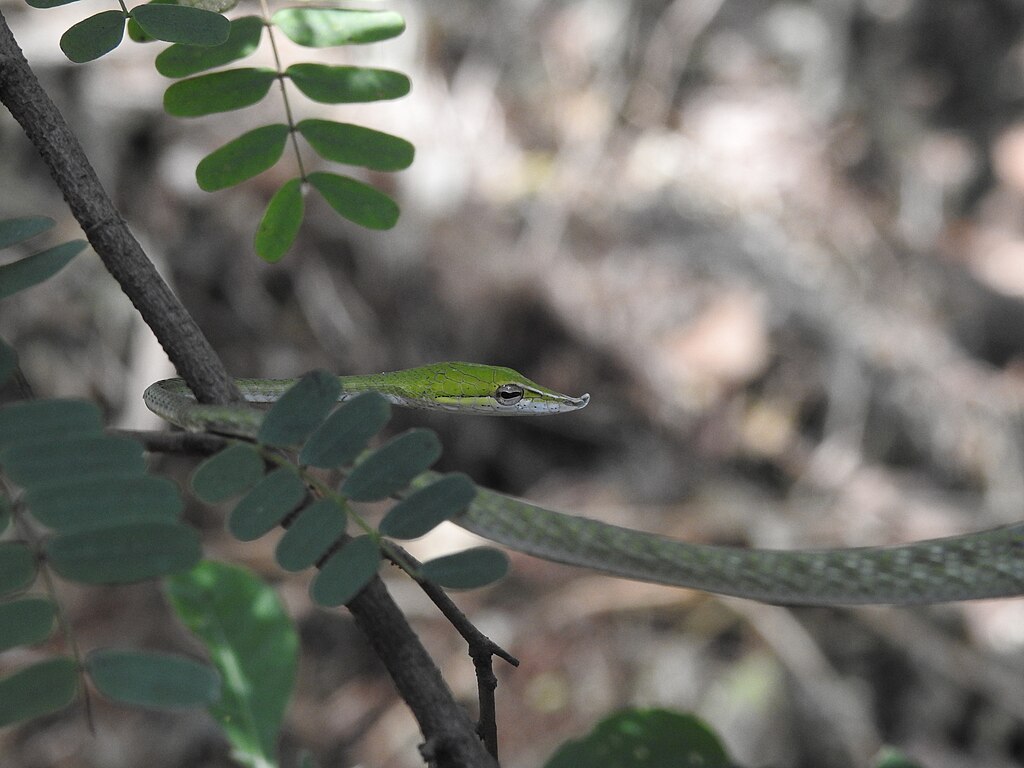
Perhaps the most sophisticated deception employed by nest-raiding snakes involves behavioral mimicry, where the snake’s movements and posture are carefully calibrated to avoid triggering defensive responses. Some species have been observed moving only when ambient conditions, such as wind, would naturally cause movement in the surrounding environment, effectively disguising their intentional motion as incidental. Certain snakes may also adopt a systematic approach to nest infiltration, gradually introducing portions of their body into the nest structure over hours or even days, allowing birds to become accustomed to their partial presence. Researchers have documented cases where parent birds eventually accept a partially visible snake as a harmless part of the nest structure, fatally lowering their guard. This gradual integration strategy represents a remarkable example of behavioral sophistication in predatory techniques.
The Rat Snake: North America’s Premier Nest Raider

Among North American serpents, the rat snake (Pantherophis spp.) stands out as particularly adept at nest raiding, with a specialized set of adaptations for arboreal hunting. These snakes possess exceptional climbing abilities, with specialized ventral scales that can grip even the smoothest bark surfaces, allowing them to access nests positioned high in the canopy. Their patient hunting style involves remarkably slow movements that minimize visual detection, sometimes taking hours to approach a nest just a few feet away. Rat snakes have also demonstrated an uncanny ability to time their raids when parent birds are absent, suggesting possible observational learning or innate timing mechanisms. Perhaps most impressively, studies have shown that these snakes can adjust their hunting techniques based on the specific defensive strategies of different bird species, employing different approaches when targeting aggressive mockingbirds versus more passive cavity-nesting species.
The Brown Tree Snake: An Invasive Nest Predator
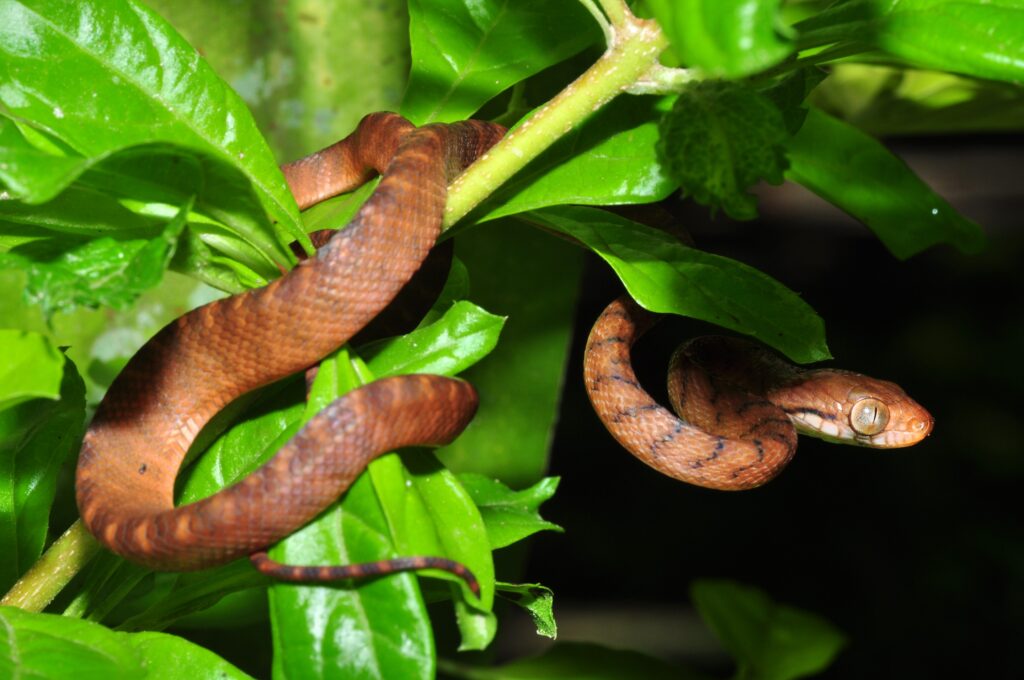
The brown tree snake (Boiga irregularis) represents one of the most devastating examples of a specialized nest-raiding serpent, particularly in the context of its introduced range in Guam. Since its accidental introduction in the late 1940s, this nocturnal hunter has decimated native bird populations through its exceptional nest-raiding abilities. The snake combines excellent night vision with heat-sensing abilities that allow it to detect even well-hidden nests in complete darkness. Its slender body can access the smallest openings in vegetation, while its mild venom subdues adult birds that attempt to defend their nests. The ecological impact has been catastrophic, with the extinction or near-extinction of most of Guam’s native forest birds attributable to this single predator species. This case study demonstrates how specialized nest-raiding abilities can have profound ecological consequences, particularly when introduced to environments lacking evolutionary defenses against such predation strategies.
Bird Defenses Against Nest-Raiding Snakes
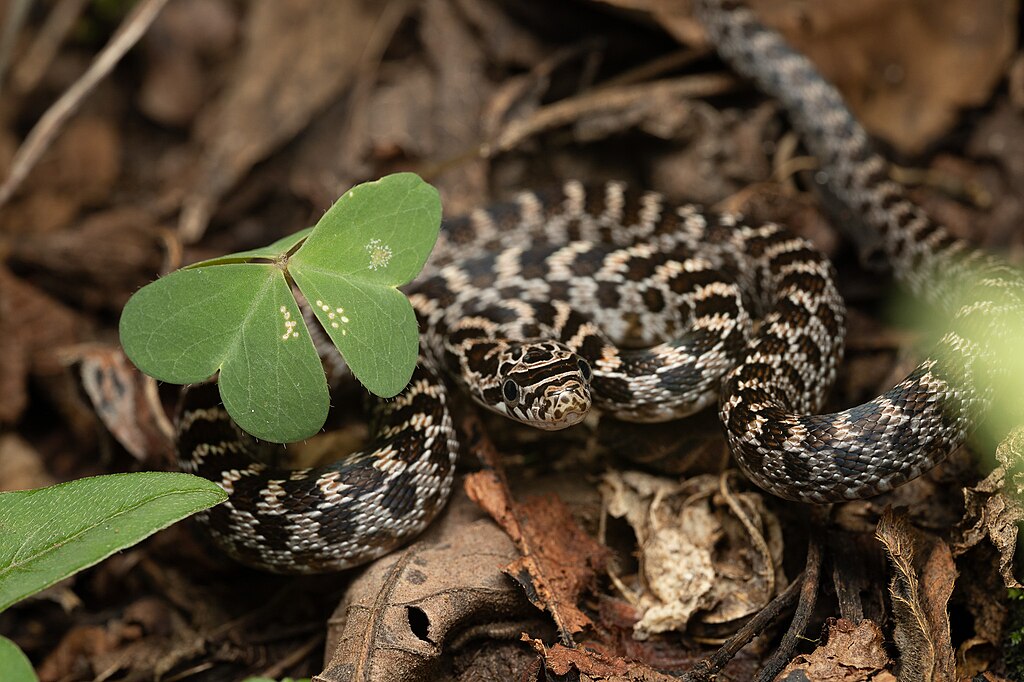
Birds have not remained passive victims in this evolutionary arms race, developing numerous defensive strategies specifically targeted at snake predators. Many species engage in active nest defense, with mobbing behaviors where multiple birds attack a snake simultaneously, often targeting vulnerable areas like the head and eyes. Strategic nest placement represents another adaptation, with some birds choosing sites specifically difficult for snakes to access, such as thin branches that cannot support a snake’s weight or smooth-barked trees difficult for snakes to climb. Some bird species have evolved to incorporate snake-repelling materials into their nests, including shed snake skins ironically used by some species to mask the scent of eggs and nestlings. Perhaps most sophisticated are sentinel systems, where community members take turns watching for approaching predators while others forage, creating an almost continuous defensive surveillance system against would-be raiders.
The Evolutionary Arms Race
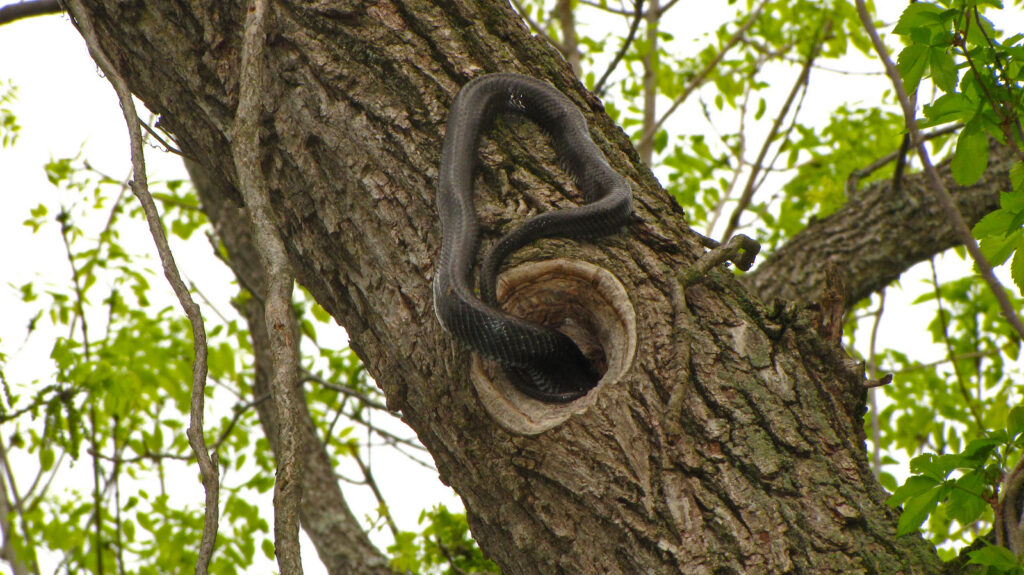
The relationship between nest-raiding snakes and their avian prey exemplifies a classic evolutionary arms race, where adaptations on one side drive counter-adaptations on the other. As birds develop more sophisticated nest defense mechanisms, selection pressure favors snakes with enhanced abilities to overcome these defenses. This dynamic has been ongoing for millions of years, resulting in the highly specialized behaviors and adaptations observed today. Interestingly, research suggests that this relationship has driven significant diversification in both groups, with different snake species specializing in raiding the nests of particular bird families. Evidence from the fossil record indicates that some extinct bird species developed extreme nesting behaviors likely in response to snake predation pressure, demonstrating the long-standing influence of this interaction on avian evolution.
Ecological Impact of Nest-Raiding Behavior
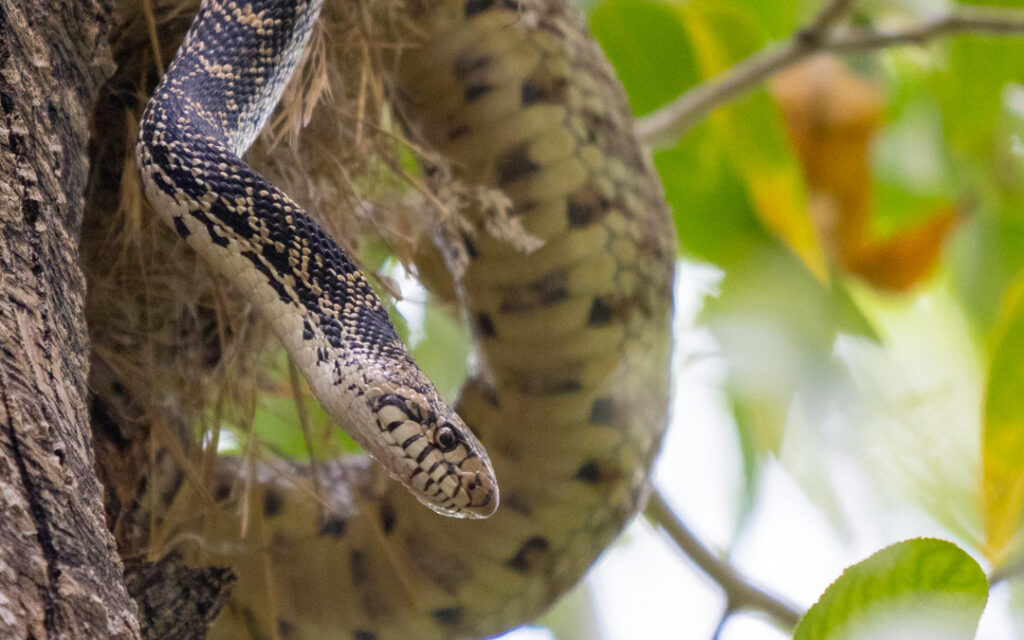
The predator-prey relationship between snakes and nesting birds plays a crucial role in maintaining ecological balance in many ecosystems. By preying on certain bird species, snakes help regulate avian populations and prevent potential overpopulation issues that could destabilize plant communities through excessive seed consumption or insect control. The very presence of snake predators drives the evolution of diverse nesting strategies among birds, contributing to greater habitat utilization and ecological niche diversification. However, this balance can be disrupted by human activities, with habitat fragmentation sometimes concentrating nests in smaller areas and making them more vulnerable to systematic predation. Conservation biologists increasingly recognize the importance of maintaining these natural predator-prey relationships, even when they may appear brutal from a human perspective, as they represent ecological interactions refined through millions of years of co-evolution.
Research Challenges and Modern Discoveries
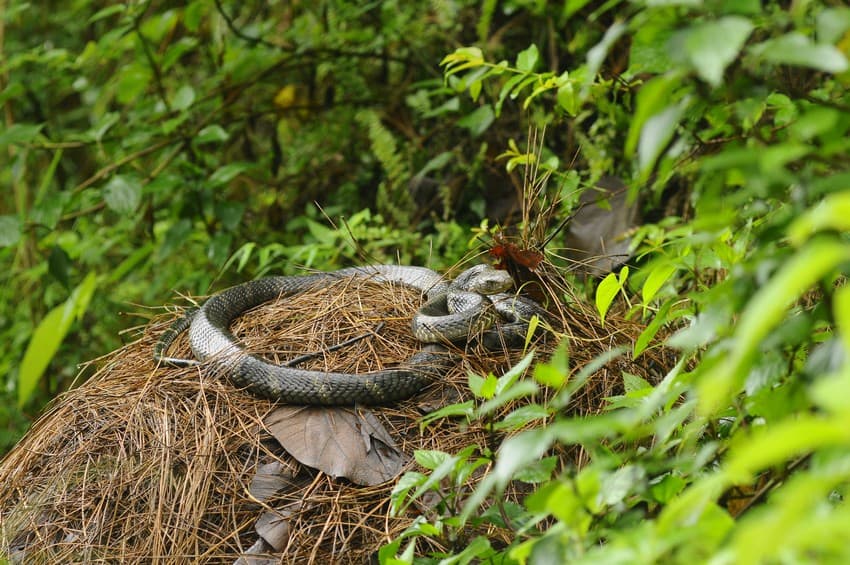
Studying the secretive interactions between nest-raiding snakes and birds presents significant challenges to researchers, requiring innovative observational techniques. Recent advances in wildlife camera technology, including miniaturized nest cameras and thermal imaging, have revealed previously undocumented aspects of these hunting strategies. DNA analysis of snake stomach contents has also provided new insights into predation patterns and dietary specialization among different snake species. One particularly fascinating discovery involves the identification of possible cognition-based hunting strategies, where snakes appear to learn from experience and modify their approaches based on past successes or failures with particular bird species. Ongoing research focuses on whether these behaviors represent true learning or sophisticated instinctual responses, with implications for our understanding of reptilian cognitive capabilities.
Conservation Implications
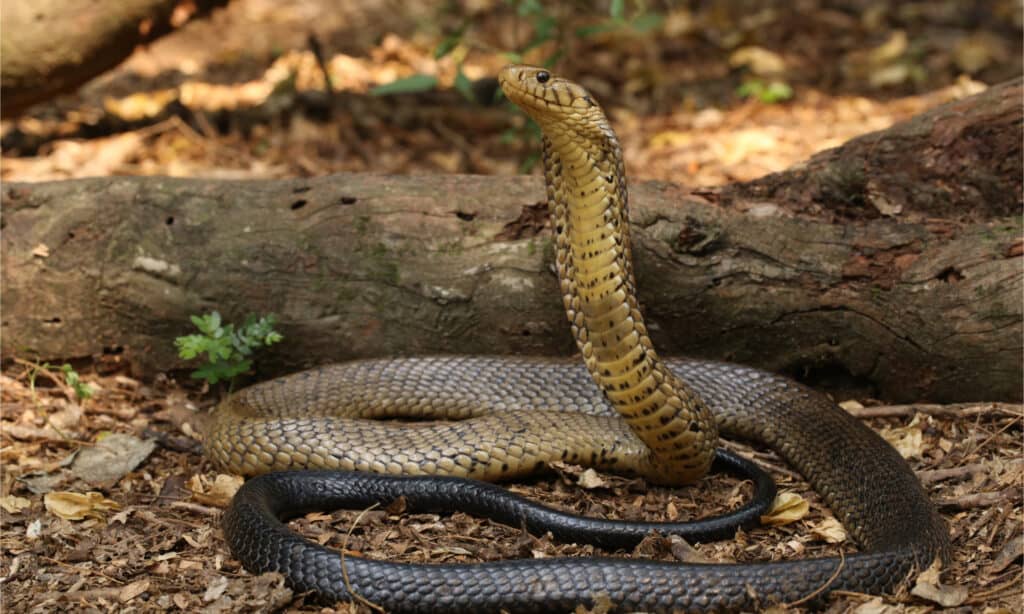
Understanding the complex dynamics between nest-raiding snakes and birds has important implications for conservation efforts, particularly in ecosystems where human activities have altered these natural interactions. In fragmented habitats, nest predation rates can increase dramatically as predators concentrate their efforts on the limited remaining nesting areas, potentially threatening vulnerable bird populations. Conversely, the decline of native snake populations can lead to imbalances in bird communities, with potential cascading effects throughout the ecosystem. Conservation strategies increasingly aim to preserve these predator-prey relationships rather than intervening to protect prey species from natural predation. In island ecosystems where introduced snake species have devastated native bird populations, targeted control measures for invasive predators must be balanced with broader ecological considerations. By preserving the ecological context in which these fascinating adaptations evolved, conservation efforts can maintain the dynamic equilibrium that has shaped both snake hunting strategies and bird defensive behaviors over evolutionary time.
The remarkable abilities of nest-raiding snakes represent one of nature’s most sophisticated examples of predatory specialization. Through a complex suite of adaptations spanning sensory camouflage, behavioral mimicry, strategic patience, and physical stealth, these serpents have perfected the art of infiltrating what should be among the most vigilantly guarded structures in the natural world. This evolutionary success story highlights the power of natural selection to produce seemingly improbable adaptations when driven by the relentless pressure of survival. For the birds that fall victim to these predators, the consequences are severe, yet their own counter-adaptations demonstrate nature’s perpetual innovation in the face of challenges. As we continue to unravel the secrets of these fascinating interactions, we gain not only scientific knowledge but also a deeper appreciation for the intricate and often surprising relationships that define the natural world around us.

